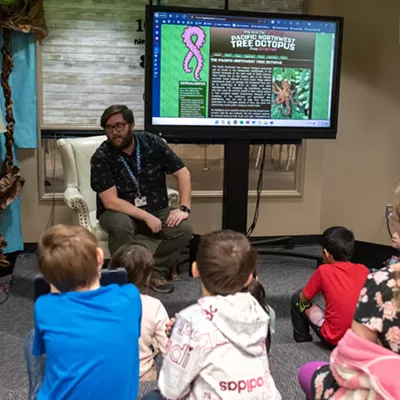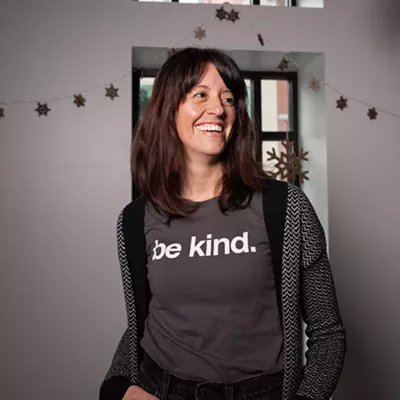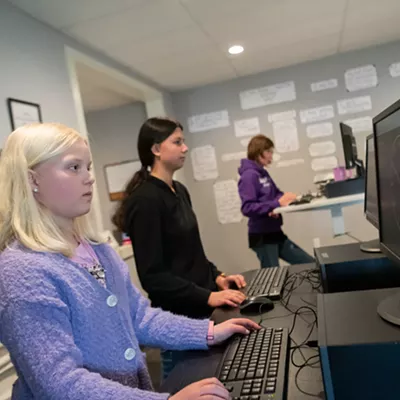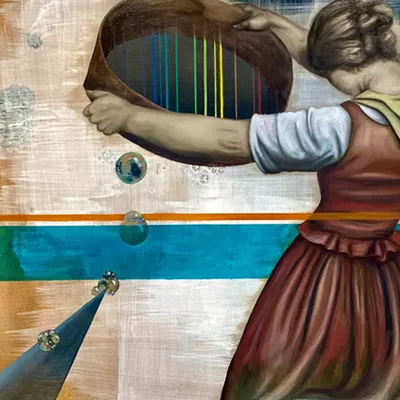You've noticed the hip decor at Starbucks -- the clean lines, the rich colors, the comfortable chairs. You've probably also picked up a CD at the counter and wondered at how carefully chosen their music selection always seems to be. You never hear Megadeth at Starbucks. Everything is smooth, mellow, comforting. The air is thick with the stinging smell of coffee. It's all upbeat and a little exotic there. It's all very... Starbucks.
It's no accident. And it's no surprise that successful businesses will use the full palate of your senses to create their brand and convince you to buy into it. But until fairly recently, one sense on that palate has gone relatively underused: smell. That's beginning to change, though, as more businesses that -- unlike Starbucks -- aren't selling a product with an inherent odor are learning that scent can still be used to create positive associations with those products.
Like Westin Hotels, which now diffuse a blend of green tea, geranium and black cedar into their lobbies, according to a recent story in the New York Times' Key Magazine. Or Jimmy Choo's high-fashion shoe store, which pumps out smells of cardamom and ivory to evoke luxury and wealth. Though the odors have little or no connection to the products themselves -- heels and hotel rooms -- they contribute to the brand, the mystique, the essence of each business.
And that's big business. The Times story shares a report by a New York-based consulting firm that predicts between $50 million and $80 million was spent on this kind of scent marketing last year. It predicts that number will top $500 million in the next decade.
"It's kind of like the last remaining frontier for marketing," says Eric Spangenberg, the dean of the college of business at Washington State University in Pullman and one of the foremost researchers of "peripherally communicated marketplace information," like the use of scents. "It's the last area that hasn't really been developed and capitalized on."
That frontier is increasingly being colonized, though, by businesses eager to extend their brands. And it's being scrutinized by scientists like Spangenberg. He and his colleagues made some of the first stabs at the phenomenon in 1996 in a consumer behavior lab in Pullman. He had 308 students browse a fake Bookie-like store that they were told was considering moving to town. In some cases, the fake market was scented with spearmint, orange, lavender or ginger. Other times, the room was not scented at all. Spangenberg found that, in the scented rooms, students looked at more products and -- when questioned later -- had much higher opinions of the store, the selection, the d & eacute;cor and the value than in unscented stores. Spangenberg and his colleagues reported that "ambient scent may lead to an enhanced subjective experience for retail shoppers; the time consumers spend examining merchandise, waiting in lines, or waiting for help may be made to seem shorter than it actually is by introducing ambient scent into the environment."
But not any old scent will have that effect, he says. It helps if the scent matches the shopping experience. Last year, he took his 1996 findings a step further, setting up an experiment at the now-defunct Ken Vogel Clothing store in Pullman. On certain days, the entire store -- which sold men's and women's clothing -- was scented with the masculine odor of rose maroc. Other days, they doused the store in vanilla. They found that women bought less on the days the store was scented for men, and men bought less on the days it was scented for women.
"Theoretically, you go in and it's like, 'This is not my store,'" he says. "[You] don't stay as long. Even if you are there, you aren't as likely to buy because it's not triggering that basic 'this is me, this is my place, this is my kind of stuff.'"
Spangenberg did another study that showed holiday shoppers treated to a retail environment that smelled and sounded like Christmas -- with Christmas music on the speakers and the smell of holiday spice in the air -- responded much more positively than those who shopped at the same store with non-Christmas music and no scent.
"If [the scent is] not congruent with what people expect, then that can hurt you," he says. "If you go into a cheese shop, you expect it to smell like certain cheeses, and it's awesome. If you had that in a clothing store, though, you'd walk right out, because it's not congruent."
But congruency can only do so much. Many shoppers complain that they hate any artificial scent, and some are even allergic to them. Just this week, a north Spokane Wal-Mart was evacuated and one person was sent to the hospital after an unidentified odor emanating from the bathrooms started giving people headaches and dry mouth.
Spangenberg agrees that scenting is a riskier marketing strategy than, say, background music. A shopper can hate the music but still shop at the store because it's got the right merchandise. Pump an objectionable smell in, though, and they won't even set foot inside. He says businesses have to take that into account: "What's the percentage of the market that you're going to lose?"
Businesses also must deal with the highly subjective nature of aroma (one man's rose is another's rotten apple) and the cultural associations of certain smells.
Then they have to deal with the ethical questions. Some critics of scent marketing contend that using scents to manipulate consumers without their knowing it is sneaky and underhanded, and that there should perhaps be a disclaimer letting shoppers know that a scent is being used to get them to buy more.
Spangenberg dismisses this, though. "It's not really Big Brother," he says. "What is any kind of marketing but some attempt to manipulate? [They're] trying to make the environment more pleasant. It's not like they're creating these mad, fornicating, indulgent consumers."
In the future, getting consumers to buy into a brand is going to have more and more to do with scents, Spangenberg believes, but also with the full sensory experience -- the complex interactions between all the senses.
"We've identified smells, we've identified music, color, lighting. The next step is how do we create the optimal environment? Let's make it an experience. Make it Disneyland for adults. Let's put them all together and make the most exciting and enjoyable place we can."
"If you buy something," he adds, "all the better."


















